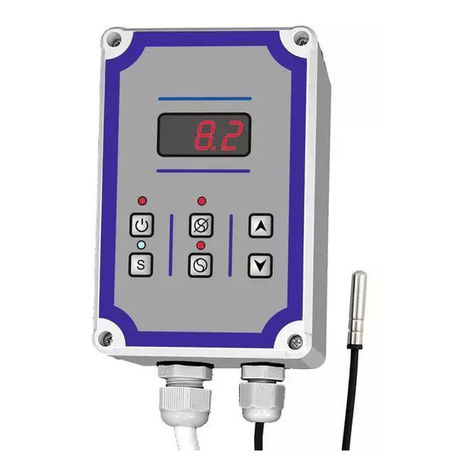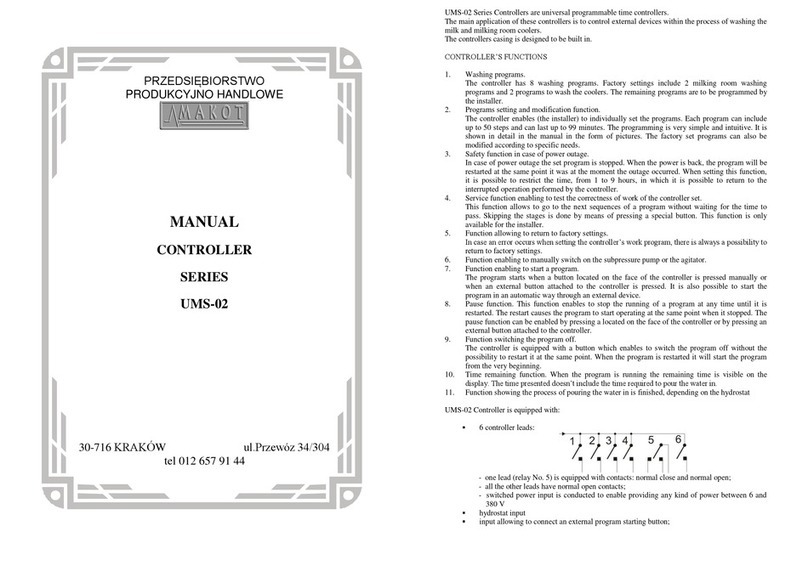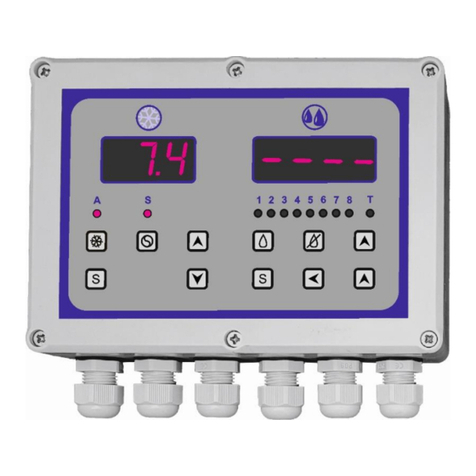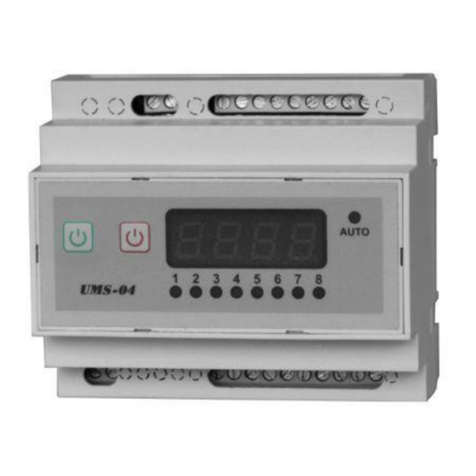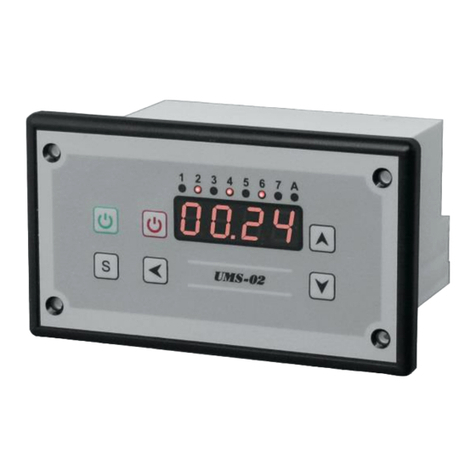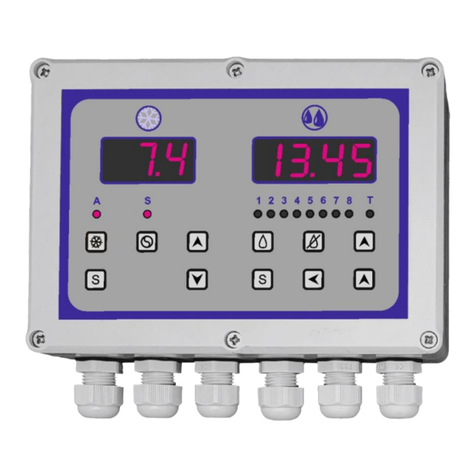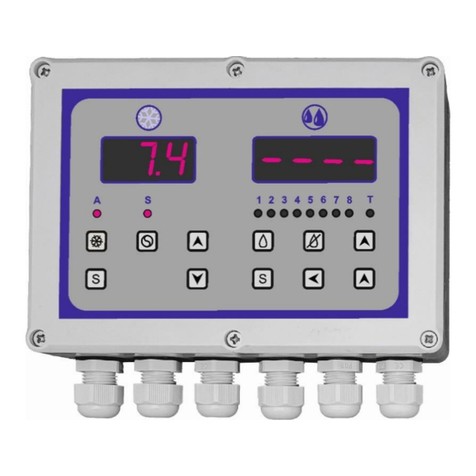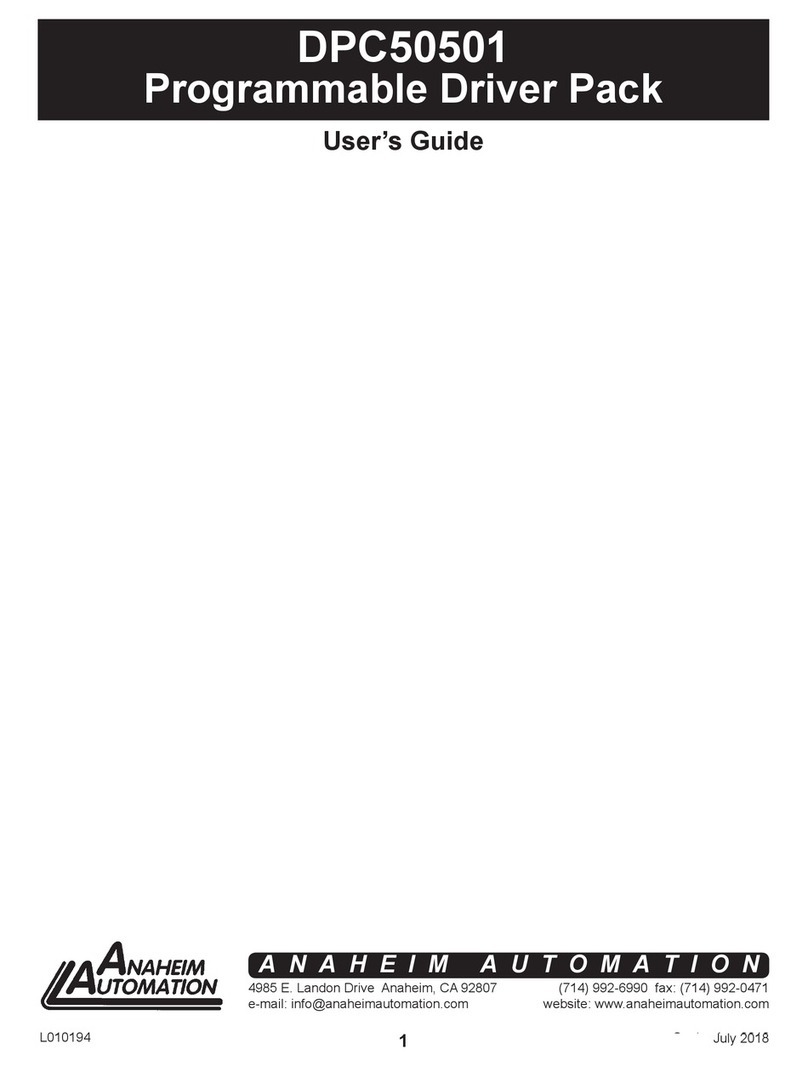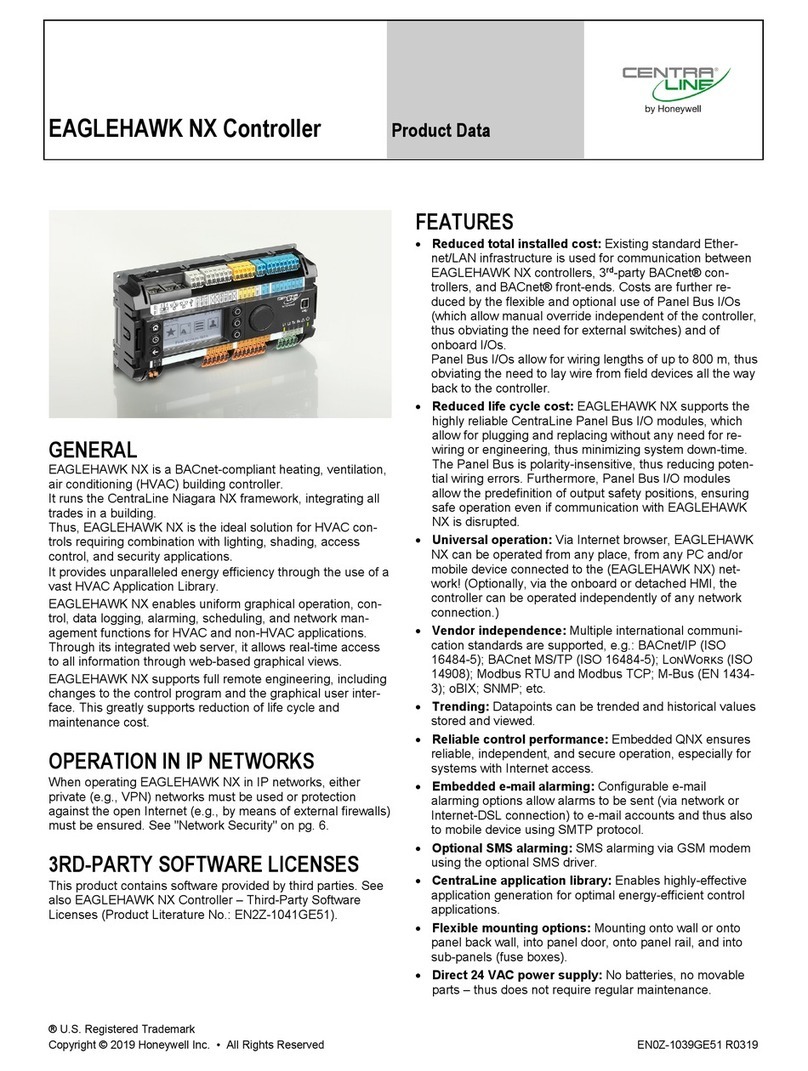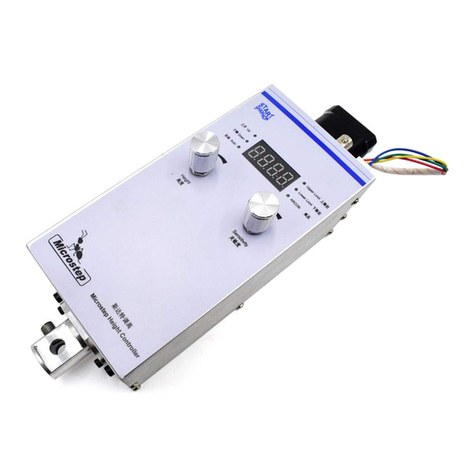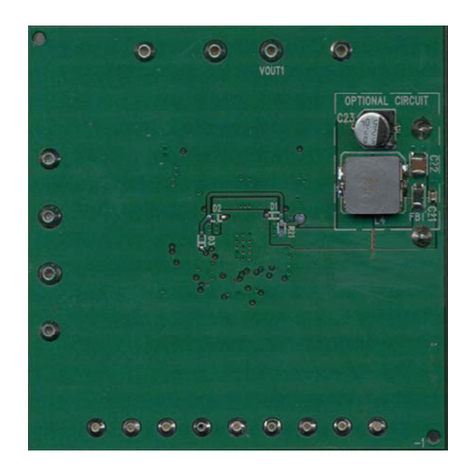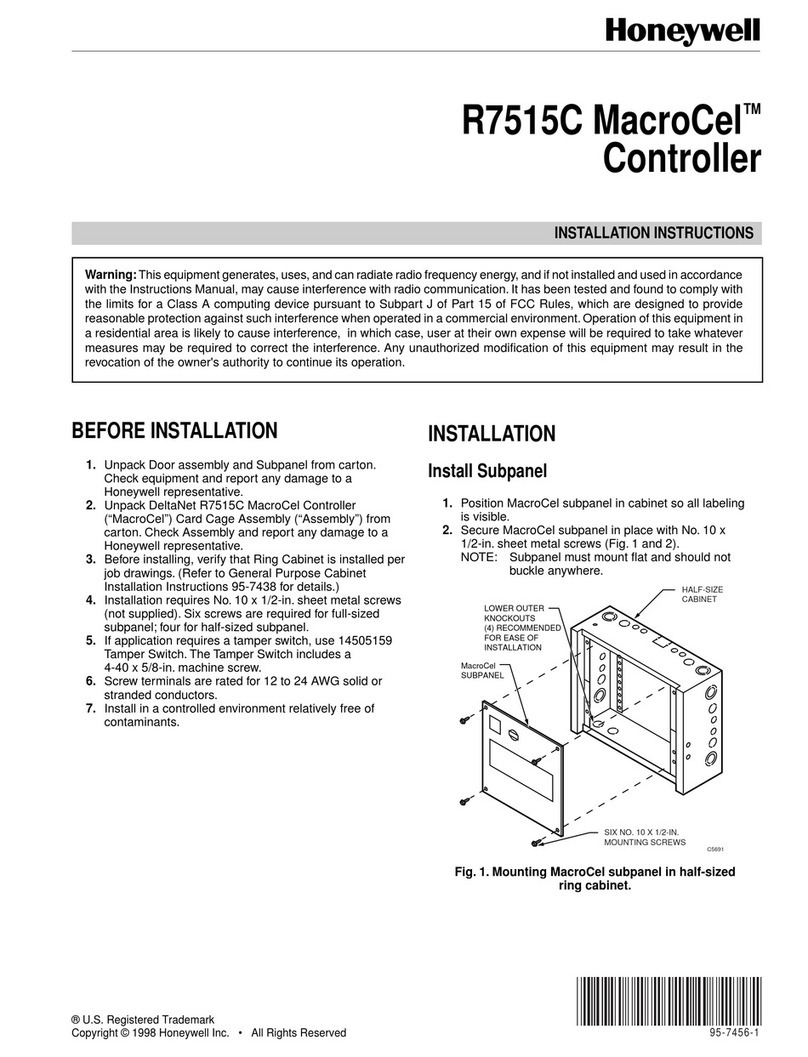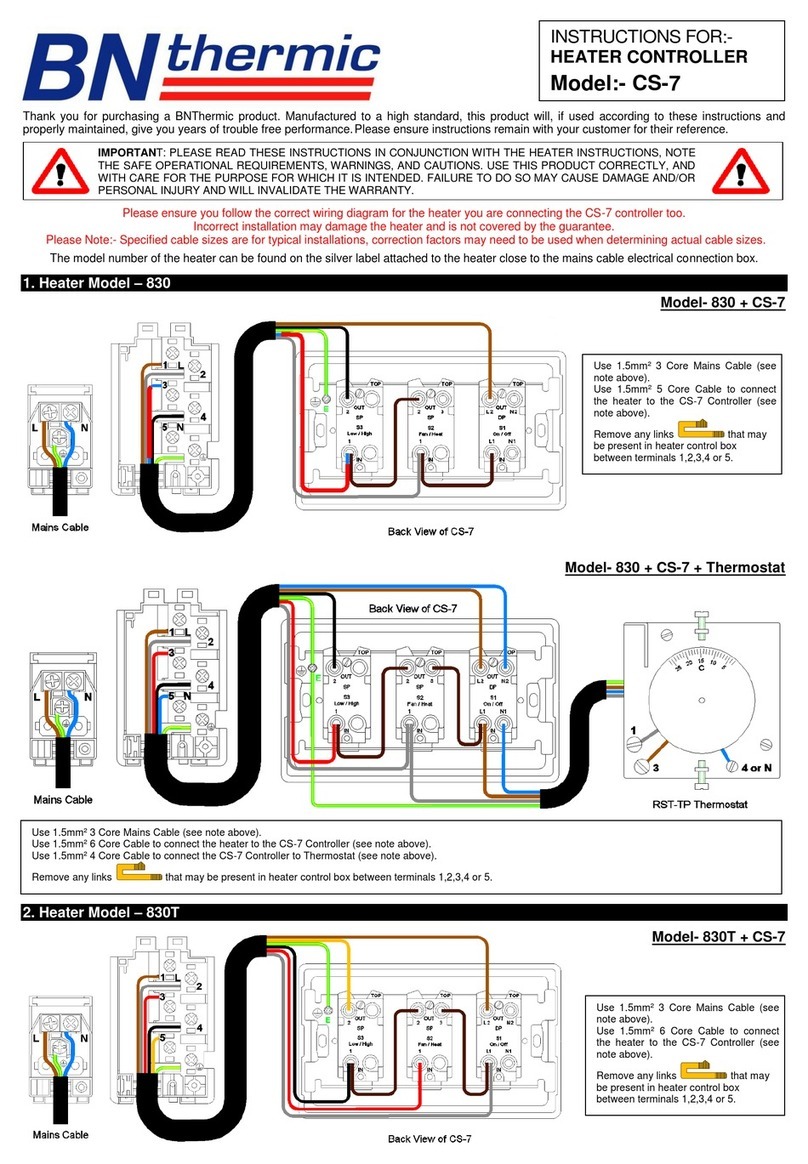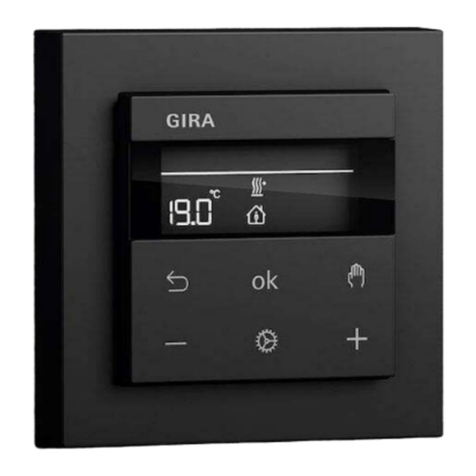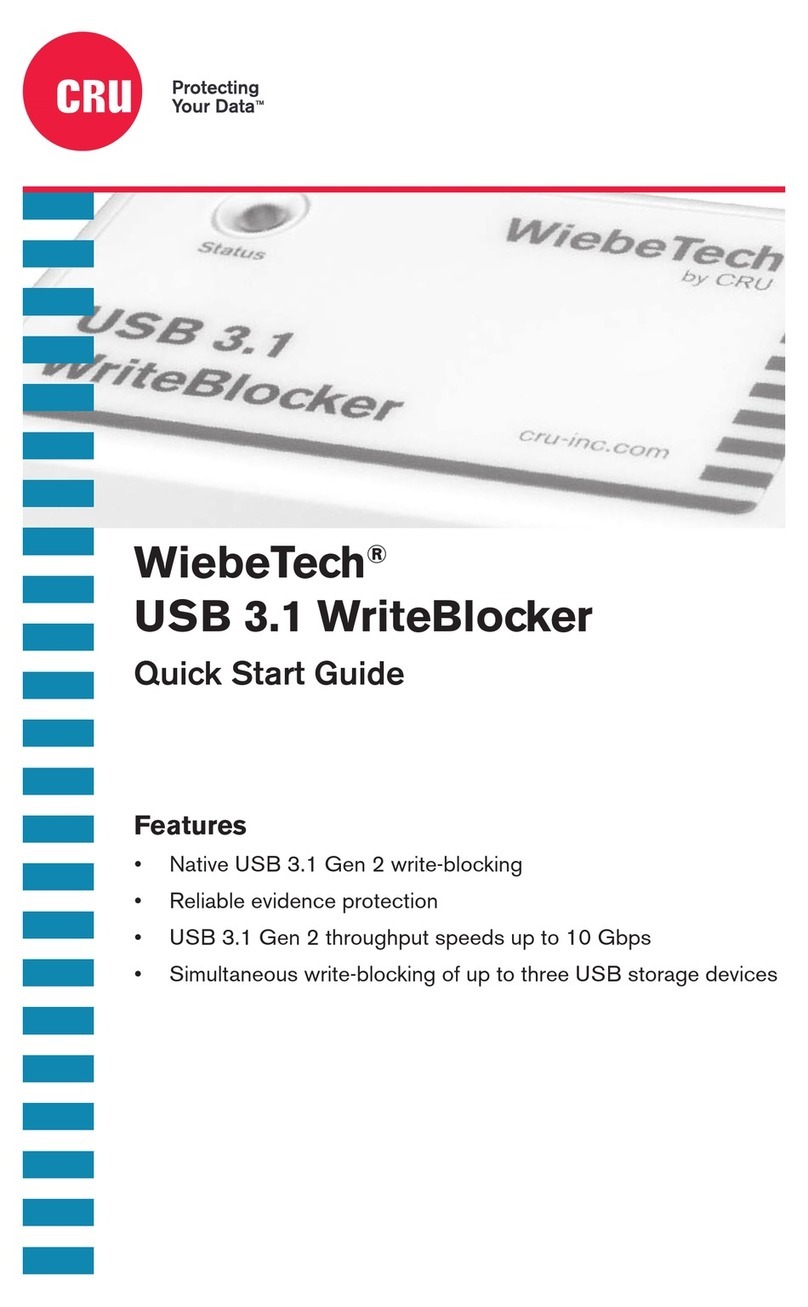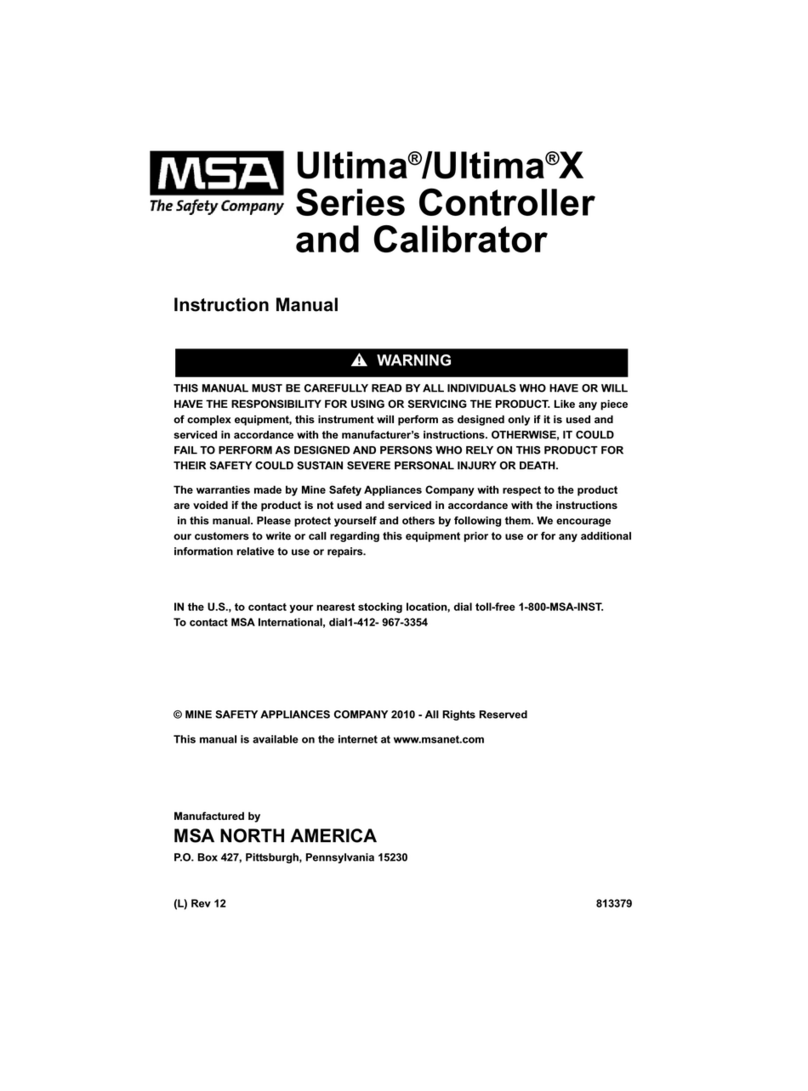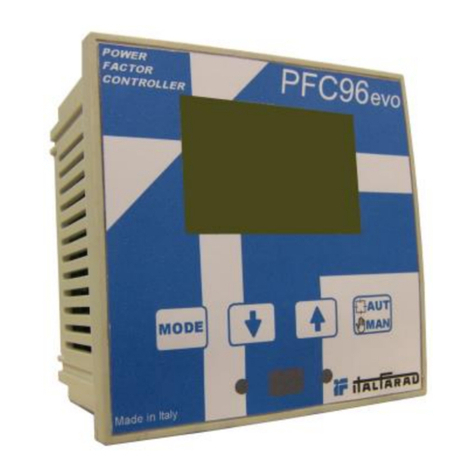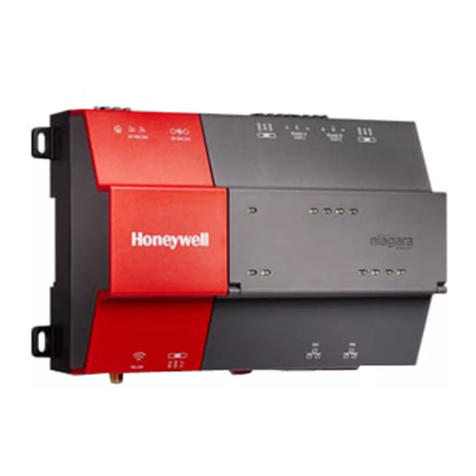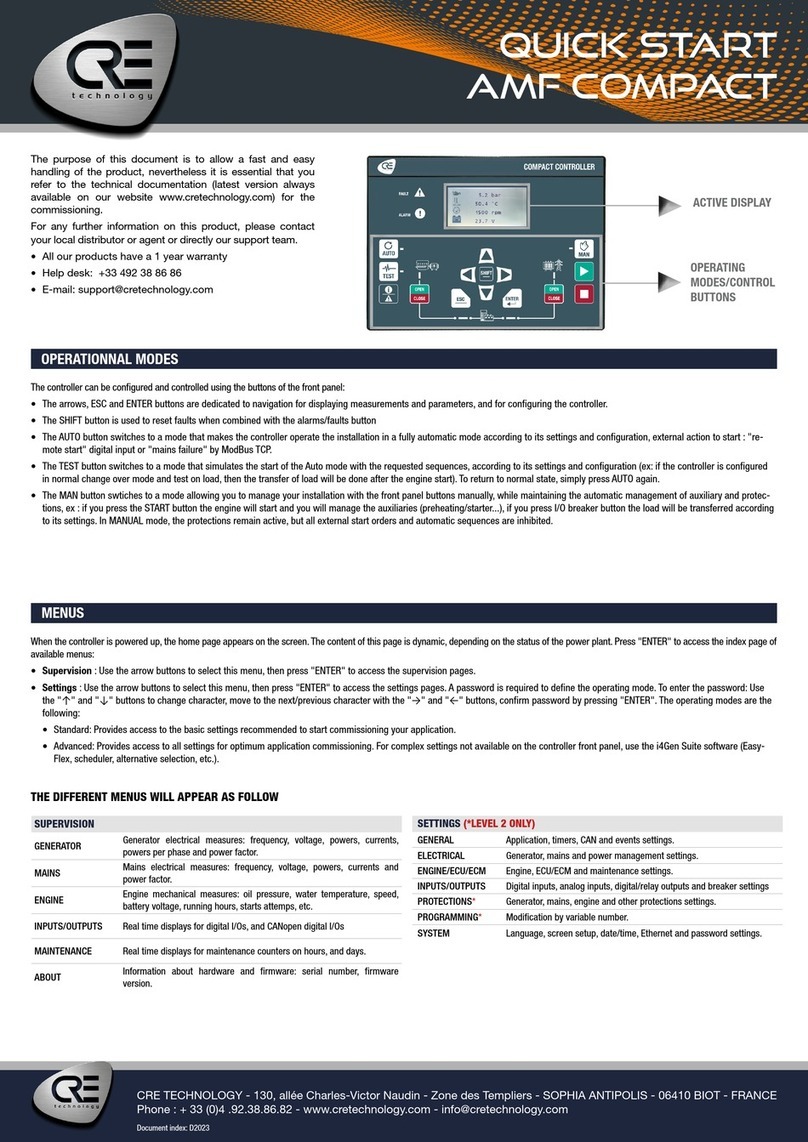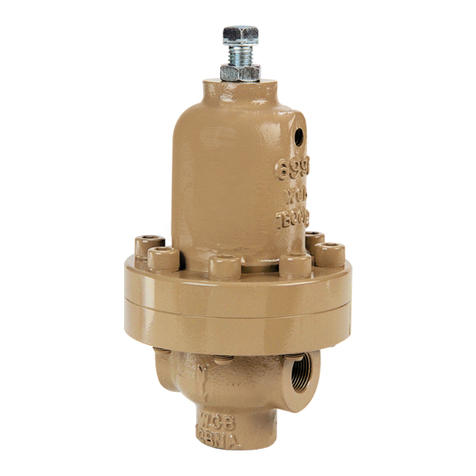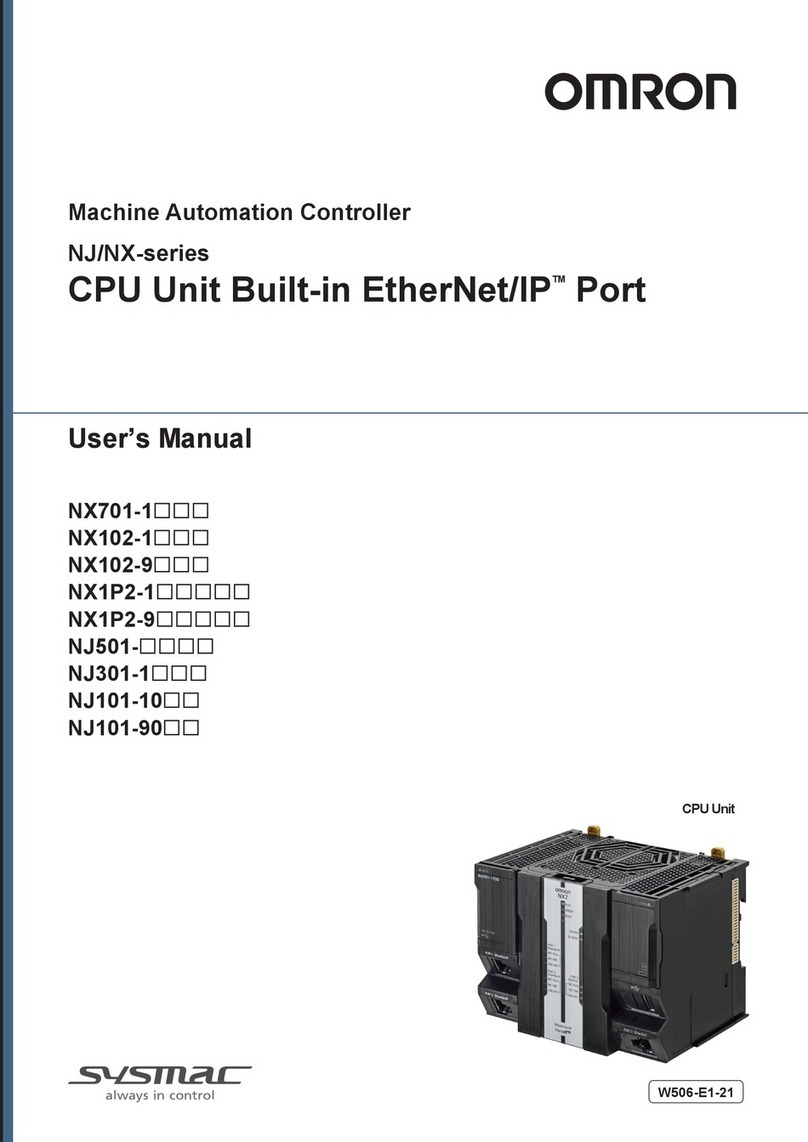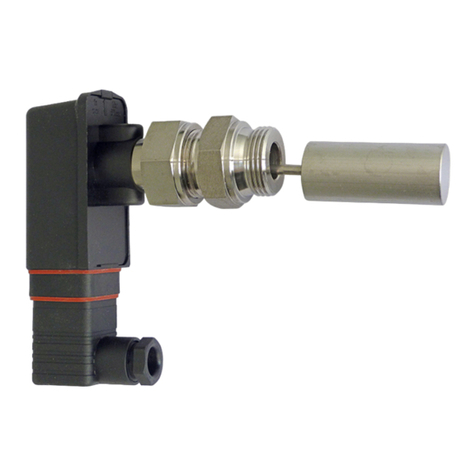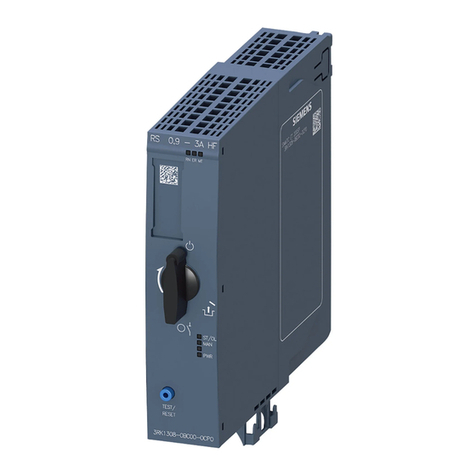MAKOT SMT-01 User manual

Page 1of 15
PPH MAKOT
ul. Przewóz 34/304
30-716 Kraków | Poland
+48 537 872 522 [Sales]
1. DESCRIPTION.
Temperature regulators of SMT series are a microprocessor-based, programmable temperature
controllers, intended for use i.a. in milk coolers and all types of dryers. The series includes following
regulators:
−SMT-01,
−SMT-02,
−SMT-02H,
−SMT-03.
Individual types differ from each other in the way of output of control inputs and outputs. The casing
of regulators in this series are adapted for panel mounting.

Page 2of 15
2. TECHNICAL DATA.
temperature measuring range
from -40 OC to +120 OC
control temperature range
from -40 OC to +120 OC
(decreased by a set hysteresis)
measuring resolution of the temperature
measurer (resolution of control
temperature settings)
•1 OC –for the range below -9,9 OC and over
+100 OC
•0,2 OC –for the range from -10 OC to +100 OC
control hysteresis
[programmable parameter]
•from 0,2 OC to 10 OC –for the range from
-10 OC to +100 OC
•from 1 OC to 10 OC –for the range <-10 OC and
>+100 OC
operation time of the stirrer / ventilator
[programmable parameter]
from 1 min. to 60 min.
standstill time of the stirrer / ventilator
[programmable parameter]
from 1 min. to 60 min.
temporary operation time of the stirrer /
ventilator
[programmable parameter]
from 1 min. to 60 min.
time delay for switching the chiller (unit)
/ stirrer on after the regulator is turned
on or the power supply decay occurs
from 1 s. to 999 s.
length of control sensors
5 m
type of temperature sensor
thermistor NTC
type of temperature measurer
digital LED
load capacity of relay contacts controlling
the chiller (unit) / heating system
30 A 250 V AC
load capacity of relay contacts controlling
the stirrer / ventilator
10 A 250 V AC
power supply
230 V AC 50 HZ
protection class
IP 55
safety class
CE

Page 3of 15
3. CONSTRUCTION.
Regulator SMT is placed in a compact casing, including all control and executive elements:
The regulator is equipped with:
✓button for switching the regulator on and off [1],
✓button disabling automatic stirrer / ventilator operation [2],
✓button enabling manual operation of the stirrer / ventilator [3],
✓digital temperature meter allowing for current temperature control, independently from
switching on or off the regulator [6],
✓LEDs signaling the current operating status of the cooling (heating) unit and the stirrer /
ventilator [7] [8] [9] [10]
✓input for connecting the limit switch,
✓control outputs, that is:
−chiller (unit) / heating system control output,
−stirrer / ventilator control output.
In the figure below, the types of outputs and inputs are shown, depending on the type of regulator.
The regulator SMT-02H v. 3, apart from cable entry through glands, has a sealing connection of the
front part of the casing with its back, which ensures splash-proofness.

Page 4of 15
ATTENTION
The blue LED indicates the activation of the cooling (heating) mode. If the LED is off,
and the regulator is connected to the mains, it means the cooling (heating) operation of the
regulator is switched off. However, you can switch on the stirrer’s manual operation by pressing
the button [3].
If the regulator’s control operation is switched off, a dot is displayed on the regulator's display
(factory settings). By changing the parameter d1 (see section 6.) from the value 0 for value 1, when
the regulator is switched off, the display will show the current measured temperature.

Page 5of 15
4. SCHEME OF CONNECTION OF THE REGULATOR.
In order to connect the regulator to the device with which it is to be controlled, the following should
be done:
✓prepare the hole in the refrigeration device to install the regulator
✓place the regulator in the prepared hole and screw it in properly,
✓place the temperature sensor inside the cooling chamber in the most convenient place for
temperature measurement and at the same time shielded from accidental damage,
✓connect the regulator to the outputs located on the rear wall of the casing, according to the
following scheme:

Page 6of 15
5. REGULATOR FUNCTIONS.
The regulator is equipped with a number of functions that, together with the possibility of creating
your own program, enable adjusting the regulator's work to the individual needs of the user. Some
of the functions listed below are activated after the appropriate programming of the regulator
(see section 6. and section 9.).
1. Continuous temperature measurement function, regardless of whether the regulator is on
(regulator must be connected to the power supply) –parameter d1 is set to 1.
2. The function of controlling the refrigeration system (chiller), depending on the measured
temperature –parameter C9 is set to the value 0.
3. Light signaling function for switching on the cooling (heating) operation –blue LED is on.
4. Control function of the heating system, depending on the measured temperature –parameter
C9 is set to 1.
5. The stirrer or ventilator control function, enabling the implementation of the following variants
of this control –depending on the F0 parameter settings:
a) automatic operation:
−cyclic operation of the stirrer / ventilator, independent of the operating condition of the
chiller (unit) / heating system,
−stirrer operates continuously during the operation of the chiller, when the chiller is
switched off, the stirrer goes into cyclic operation,
−stirrer / ventilator works only when the chiller / heating system is switched on,
−continuous stirrer / ventilator operation while the regulator's operation is on (main
application in dryers),
−switched off stirrer / ventilator operation,
b) operation triggered manually:
−switching on continuous stirrer / ventilator operation, regardless of whether the control
operation of the regulator is switched on; in order to end the stirrer / ventilator
operation, press the button [3],
−switching on the stirrer / ventilator operation for a strictly defined time, regardless
of whether the control work of the regulator is switched on.
6. Blocking function of the stirrer and the chiller (unit) when the flap of the milk cooler tank
opens (actuation of the limit switch) –parameter AF. In dryers it can be used to turn off the
ventilator, e.g. when the door is opened.
7. Defining the operation of the limit switch as negative or positive –parameter UU.
8. The chiller (unit) operation supervision function, consisting in the possibility of setting
the maximum and minimum working time of the chiller, as well as the minimum standstill time
of the chiller –parameters E1 and E2.
9. The function of registering the maximum and minimum temperature values throughout
the regulator's working cycle. This function is connected with the possibility of temporally
delaying the recording of temperature data to the regulator's memory since its activation –
parameter AA.

Page 7of 15
10. The function of alarm signaling (visual and audible) of exceeding the set temperature range –
parameters HA and HE. This function is connected with the possibility of delaying the time
of switching on the alarm system of the regulator from the moment of its activation.
11. Monitoring and signaling function of the damage to the temperature sensor –in such case
the letters ACU appear on the display.
12. Function of adjustable delay time for switching on the chiller (unit) and stirrer after decay and
re-switching on the voltage –parameter dE.

Page 8of 15
6. PROGRAMMING.
In order to ensure the correct working cycle of the regulator, it is necessary to program its operating
parameters accordingly. By default, the controller is programmed for standard operating conditions
for the purpose of controlling the milk cooler.
In order to change the factory setting, enter the setting mode. This is done by holding the button
marked with the letter S for approx. 17 seconds. After entering the setting mode UCO appears on
the display. The next pressing of the S button confirms the willingness to make changes. Then press
the ▲key to enter the access code and confirm with the S button. After correct entry into the setting
mode, the ▲and ▼buttons are used to select the desired parameter. The entry to the parameter
settings is made by pressing the S button. The change of the parameter value is made using the ▲
and ▼buttons; for the change to be saved, confirm with the button S. The exit from the setting
mode is made by setting the EE parameter and confirmation with the S button or automatically after
17 seconds of inactivity. The following figure illustrates the programming procedure:

Page 9of 15
7. THE REGULATOR’S WORK CYCLE.
When the regulator is connected to the mains and its operation is switched on with the button [1],
it goes –after the delay set in parameter dE –to the control phase.
The regulator controls two control circuits:
a) control circuit for the refrigeration / heating unit;
b) control circuit for the stirrer’s motoreducer.
The work for the control settings of the refrigeration system will be discussed below.
ATTENTION
Parameter dE is the delay of switching on the unit and the stirrer after switching on the
regulator's work or after the supply voltage decay –default value is set to 5 sec.
7.1. Control of the refrigeration unit.
The temperature control value (within the range specified in parameters b1 and b2) is set by pressing
the buttons marked with the symbols ▲and ▼, while short pressing any of these buttons displays
the currently set value, while only the next pressing causes the change of this value. Transition from
reading the measured temperature to the reading of the set control temperature is signaled by the
digits / numbers flashing.
The chiller (unit) control in the cooling phase takes place depending on the temperature present in
the refrigeration chamber. The regulator can control the cooling temperature in the range of -40 OC
up to +120 OC. In order to limit the scope of the control so as to prevent the user of the cooling
device from setting the temperature outside this range, set the proper parameters: b1 (limitation
of the lower control temperature range) and b2 (limitation of the upper control temperature range).
ATTENTION
Temperatures specified in parameters b1 and b2 do not indicate control points for switching off
and switching on the operation of the unit.
Setting b1 = b2 blocks the possibility of changing the programmed temperature by means of the
▲and ▼buttons. It is not allowed to set b1 > b2.
The change in the value of b1 or b2 can be blocked by the currently set control temperature.
In the event of such a situation, change the control temperature settings and then change
parameters b1 and / or b2.
It is also important to set the control hysteresis correctly –parameter HI. The control hysteresis is
a parameter that determines the temperature difference at which the switching off occurs and then
the chiller (unit) is switched on. For example, if the control temperature is set to + 4 OC and hysteresis
to 2 OC, then the chiller (unit) will be switched off after reaching 4 OC, while its re-activation will
occur after the temperature has risen to 4+2 = 6 OC.
The regulator allows to set the hysteresis of the control in the range of 0.2 OC to 10 OC, every 0.2 OC.

Page 10 of 15
ATTENTION
If the regulator is set in heating mode, the hysteresis operation has the opposite character,
i.e. the heating system is switched off after the temperature has dropped below the set value,
taking into account the value of the programmed hysteresis.
7.2. Control of the stirrer’s motoreducer.
The working status of the stirrer is signaled by two red LED (see section 3.):
−signaling of switching on the stirrer’s motoreducer [8],
−indication of the stirrer operation mode [7].
The regulator has two modes of stirrer operation, i.e. automatic or manual, which are described in
detail below.
7.2.1. Automatic stirrer operation.
In this mode, depending on the settings of parameters F0, E1 and E2, the stirrer may be connected
to the operation of the chiller (unit) or completely independent of the operation of the chiller (see
section 9.). The stirrer operation setting in the automatic mode is signaled by the continuous lighting
of the red LED [7].
The stirrer's operation can be switched off at any time by means of the [2] button (see section 3.),
except when the F0 parameter is set to 2 or 3.
Switching off the regulator by pressing the [1] button also turns off the stirrer operation.
7.2.2. Manually triggered stirrer operation.
The manual stirrer operation can be initiated by pressing the button marked by symbol [3] (see
section 3.); at this point, the automatic operation of the stirrer stops and the manual operation
starts. Manual operation of the stirrer is also possible when the regulator is switched off (button [1])
or stirrer operation switched off (button [2]). The setting of the stirrer operation in manual mode is
signaled by a flashing red LED [7].
The manual operation of the stirrer is not interrupted when the regulator is switched off manually
by pressing the [1] button.
The stirrer operation in this mode can be interrupted at any time by pressing the button again.
The manual stirrer operation can take place in two variants, depending on the CP parameter settings:
−setting the value 0 means continuous stirrer operation,
−setting the value >0 means that the stirrer works for the set number of minutes; after time
set elapses, the manual operation of the stirrer is switched off.
ATTENTION
No light signaling of the stirrer operation [7] [8] when the regulator is switched off means that
the automatic stirrer operation has been switched off, at the same time the manual operation
has not been switched on.

Page 11 of 15
8. ADDITIONAL FUNCTIONS.
Below, some specific functions of the regulator will be described, enabling the regulator to be used
for various applications.
8.1. Limit switch of the flap.
The regulator is equipped with the possibility of connecting the external limit switch of the tank flap.
The principle of operation of this input consists in immediately switching off the stirrer's operation
at the moment of shorting or opening of this input (depending on the UU parameter setting), made
by the connected limit switch of the flap. The return of the stirrer operation (after being interrupted
by the limit switch) follows after the disappearance of the flap opening signal with a delay of 5 sec.
At the same time, depending on the AF parameter settings made, it is possible to disable the chiller
(unit) operation. The chiller operation is switched off with a set delay in relation to the opening signal
of the flap, so that the momentary opening does not immediately stop the operation of the chiller.
The chiller returns to work after the flap opening signal disappears, taking into account the
programmed minimum standstill time of the chiller.
8.2. The function of registering the minimum and maximum temperatures.
The SMT regulator has the function of recording in its internal memory the values of maximum and
minimum temperatures that occur throughout the regulator's operating cycle. This function makes
it possible to check whether the milk is stored under the correct temperature conditions.
When the device is switched on, after the end of the programmed delay (parameter AA –see section
9.), the temperature values are recorded to the regulator's memory. The programmable delay time
of enabling this function allows for pre-cooling the milk after the start of cooling and thus not taking
into account the maximum temperature when the device is started. This time should be selected by
the user for the type of tank and the actual operating conditions of the device.
At any time, the user can read the maximum and minimum temperature values presently available.
The following figure illustrates reading:

Page 12 of 15
ATTENTION
1. In the absence of entries of maximum and minimum temperatures in the regulator's memory,
the symbol --- is displayed.
2. Power supply loss causes the regulator's memory to be cleared.
At any time, you can manually delete the current maximum and minimum values. The following
figure illustrates manual memory erasing:
8.3. The function of alarm signaling the exceeding of the correct temperature range.
The regulator has the function of signaling the exceeding of the set temperature range. In order for
the function to work properly, the appropriate temperature range must first be programmed,
this is: parameter A1 –temperature below which the alarm will be activated and parameter A2 –
temperature above which the alarm will be triggered (see section 9.).
The third parameter to be defined is the time delay of switching on the alarm function from
the moment the regulator’s operation is switched on – parameter AA. This delay eliminates
triggering of an alarm in the initial cooling phase.
Exceeding the set temperature range is signaled visually and sound. In the event of activation of the
alarm, the buzzer is triggered cyclically every 1 minute for 5 seconds, and at the same time letters
PPP and the temperaturę value are displayed.

Page 13 of 15
ATTENTION
The parameter AA is identical to the delay specified in the maximum and minimum temperature
recording function.
In other words, the delay value set in the parameter AA will be the same for recording maximum
and minimum temperature and for parameters A1 and A2.
The audible alarm can be turned off by setting the HE parameter to 1 (see section 9.). In this case,
exceeding the set temperature range is signaled only visually, as shown in the figure above.
The alarm system (audible and visual) can also be turned off completely by changing the HA
parameter to 1 (see section 9.).
8.4. Temperature sensor damage indication.
If the regulator etects damage to the temperature sensor, the letters ACU appears on the display,
and at the same time the audible alarm signal is activated. The operation of the unit and the stirrer
is interrupted until the failure is removed.
ATTENTION
Sensor damage indication also occurs if the range of temperatures measured by the regulator is
exceeded.

Page 14 of 15
9. TABLE OF SEETINGS.
DESCRIPTION OF THE
PARAMETER
SYMBOL
SETTING RANGE
FACTORY
SETTING
accessing the settings
UC0
access code
1.2
regulator operation mode
C9
0–cooling
1–heating
0
limitation of the lower
value for the control
temperature range
b1
setting the temperature from -40 OC to
+120 OC, every 1.0 OC
2 (OC)
limitation of the upper
value for the control
temperature range
b2
setting the temperature from -40 OC to
+120 OC, every 1.0 OC
10 (OC)
control hysteresis
HI
setting the temperature:
•from 0.2 OC to 10 OC, every 0.2 OC –for the
range from -10 OC to +100 OC
•from 1.0 OC to 10 OC, every 1.0 OC –for the
range of <-10 OC and > + 100 OC
2 (OC)
minimum operation time
of the chiller (unit)
CA
0.0 –inactive
>0.0 –active: setting the time from 1 min. to
60 min., every 1 min.
0
maximum operation time
of the chiller (unit)
CC
0.0 –inactive
>0.0 –active: setting the time from 0,5 h to
9,5 h, every 0,5 h
0
minimum standstill time
of the chiller (unit)
CF
0.0 –inactive
>0.0 –active: setting the time from 1 min. to
60 min., every 1 min.
0
time after which the chiller
(unit) is turned off after
the flap of milk tank is
opened
AF
0.0 –inactive
>0.0 –active: setting the time from 0,1 min.
(6 sec.) to 15 min., every 0,1 min. (6 sec.)
0,1
(min.)
[= 6 sec.]
stirrer operation mode
F0
0–operation according to the times set in E1
and E2, regardless of the operation of the
chiller (unit)
1–continuous operation while the chiller
(unit) is running; when the chiller is on
standby, the stirrer operates according to the
times set in E1 and E2
2–as in setting 1, but disabling with the
stirrer's working button causes its operation
only during the operation of the chiller
3–as in setting 1, but the button that disables
the stirrer operation is inactive
4–continuous operation, regardless of the
operation of the chiller and times set in E1
and E2
1
standstill time of the stirrer
E1
etting the time from 1 min. to 60 min., every
1 min.
15 (min.)
operation time of the
stirrer
E2
setting the time from 1 min. to 60 min., every
1 min.
2 (min.)

Page 15 of 15
manual stirrer operation
mode
CP
0.0 –continuous work
>0.0 –stirrer operation for a specified time in
the range from 1 min. to 60 min., every 1 min.
5 (min.)
delay of registering of the
maximum / minimum
values of temperature and
delay of activation of the
temperature alarm
AA
setting the time from 0 h to 24 h, every 0,1 h
2 (h)
lower temperature of the
alarm
A1
setting the temperature from -40 OC to
+120 OC, every 1.0 OC
2 (OC)
upper temperature of the
alarm
A2
setting the temperature from -40 OC to
+120 OC, every 1.0 OC
12 (OC)
sound of the alarm
HE
0–active
1–inactive
0
visual and sound alarm
of exceeding the set
temperature range
(parameters A1 and A2)
HA
0–active
1–inactive
0
scaling the control
sensor**
CU
every 0,2 OC
scalable
value
setting the operation
of the limit switch
of opening the tank’s flap
UU
0–closing the limit switch: raising the flap
1–opening the limit switch: raising the flap
0
delay of switching on the
chiller (unit) and the stirrer
after connecting
the regulator to the mains
or when power supply
decay occurs
dE
setting the time from 1 sec. to 999 sec., every
1 sec.
5 (s.)
display status when the
control is switched off
d1
0–the dot is displayed
1–the currently measured temperature is
displayed
0
return to factory settings
FA
0–no return to factory settings
1–after setting 1 and turning off the
regulator from the power supply, switching it
on again restores the factory settings and the
parameter value goes back to 0
0
leaving the settings
EE
** set at the manufacturing stage (do not change without obvious need)
Other manuals for SMT-01
1
This manual suits for next models
3
Table of contents
Other MAKOT Controllers manuals
